Whisky Route 6: Islay and Jura – Spiritual Whisky Capitals
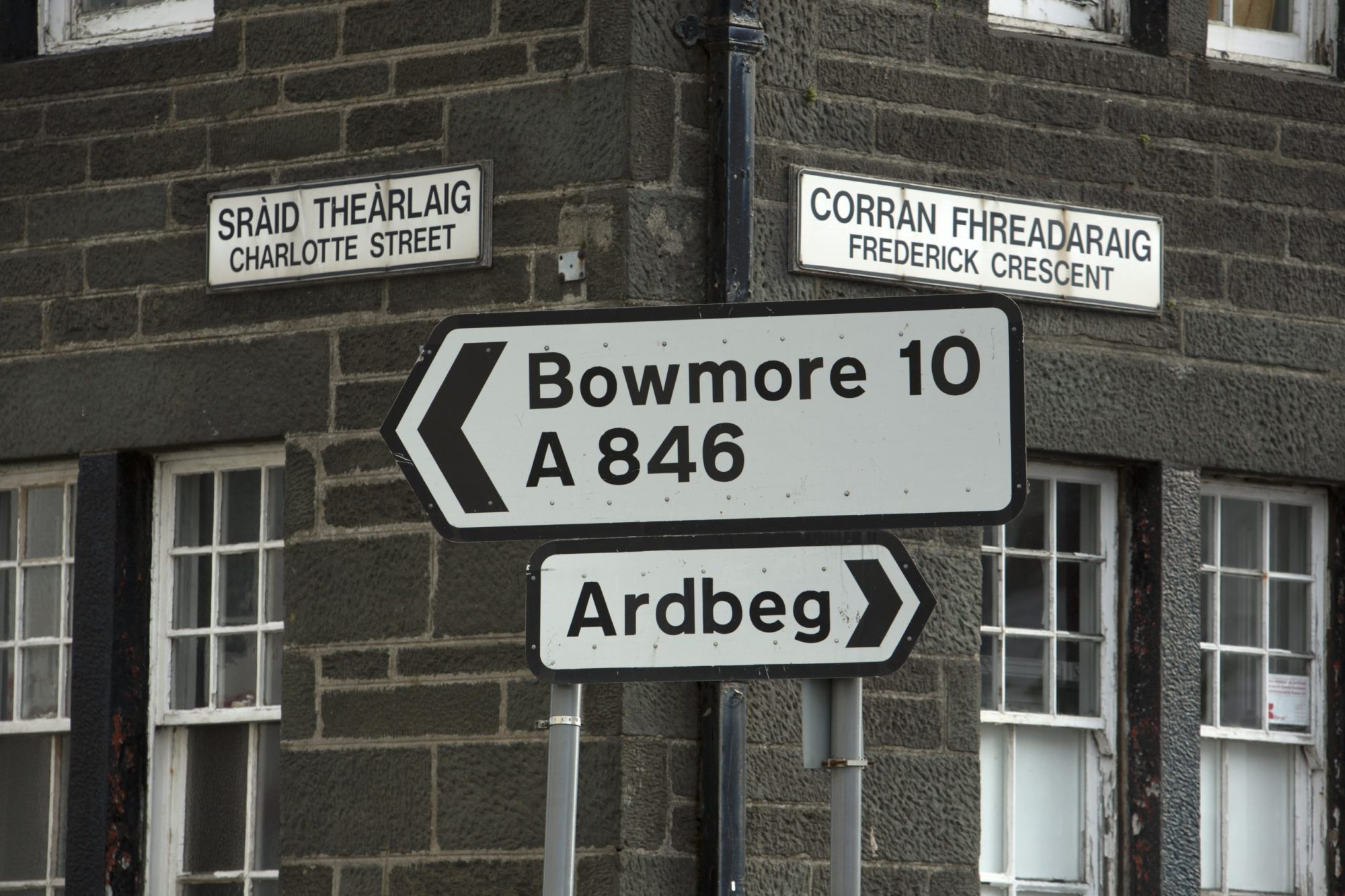
As seafarers, after our north-to-south trip along the stunning West Coast and its beautiful islands, the time has come to embark on the final-but certainly not the least-leg of our whisky journey. Prepare to experience the wilderness and beauty of one of the most romanticised and sought-after whisky destinations as we head to Jura and Islay.
Islay, in particular, is almost a pilgrimage for whisky enthusiasts, featuring ten distilleries that currently produce whisky, with plans for more in the future. Some people have even speculated whether Islay might eventually sink under the weight of so many distilleries!
But first, let’s begin our adventure on the breathtaking and rugged Isle of Jura.
Call of the wild: Jura
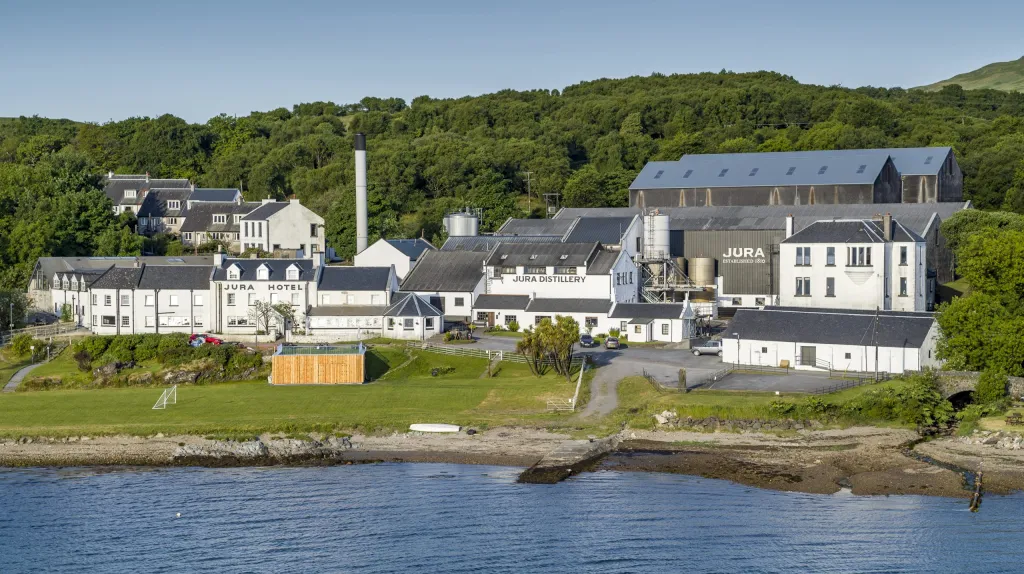
Jura Distillery – Photo: VisitScotland
Lovers of the great outdoors won’t resist this Island’s untamed beauty, a spectacularly remote place where wild deer outnumber the local population 30 to 1 (staggering, isn’t it?). Literature buffs will find in this Island an interesting pilgrimage too, as it is here that British writer George Orwell wrote his most famous work, 1984, during his stay at Barnhill cottage.
But let’s talk whisky: despite the presence of peat bogs aplenty, the spirit produced here hasn’t been peated for a very long time (and even now, just very mildly).
The Island is home to the namesake Isle of Jura distillery, a well-known name worldwide. Founded in 1810 after years of illicit distilling taking place on the Island (being remote comes in handy for such trade), it was and still is at the centre of the community of Craighouse, the main settlement on Jura.
Production was halted in 1910, when the distillery was dismantled, but resumed in the 1960s under new ownership, with a light and fruity character also contributed by their massive stills, which are the second tallest in Scotland after those at Glenmorangie. Although their whisky had primarily been used in blends for years, the past few decades have seen a pivotal shift, and now all production is dedicated to single malt bottlings, some of which incorporate subtle touches of peat and sherry notes.
The distillery sits right next to the hotel if you fancy an overnight stay, so close that you don’t even have to cross the road.
While you are on this Island, don’t miss the opportunity to see the Corryvreckan whirlpool, a maelstrom that has been framed by Scottish folklore and is considered one of the most treacherous points in the British Isles (as well as giving the name to one of Ardbeg’s core range editions).
If you are a keen hillwalker, you can enjoy a hike on the Paps of Jura, the Corbett dominating Jura’s landscape (take a hip flask with you for a summit sip!).
Once you are ready, jump on the ferry heading to the magic shores of Islay.
A dram with a view: Caol Ila
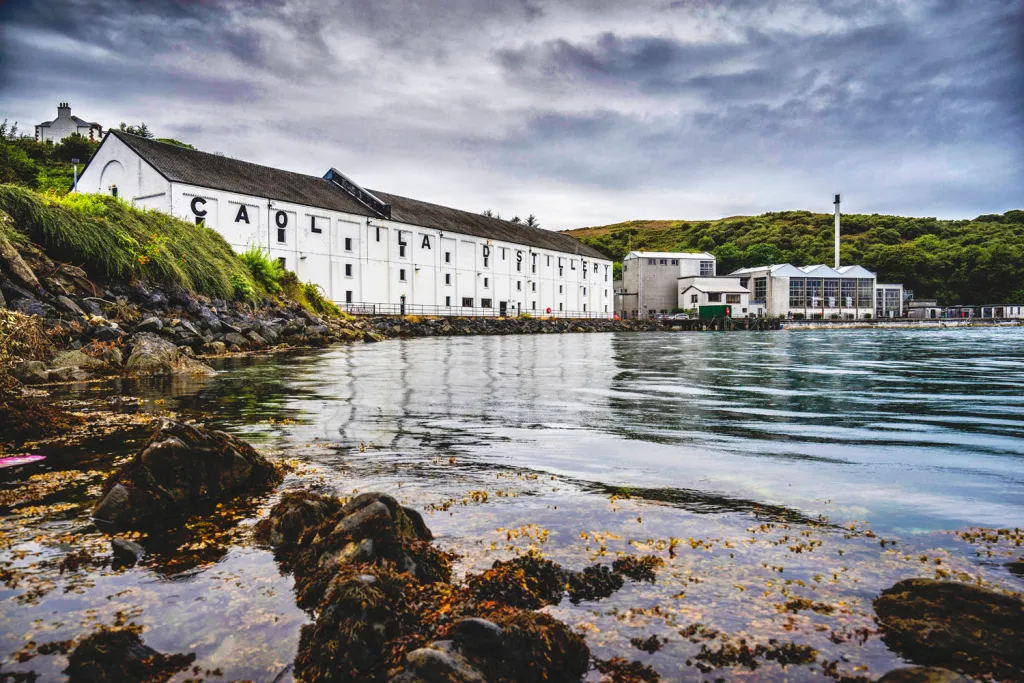
Caol Ila Distillery – Photo: Diageo
You can keep your eyes peeled for the Paps, as the CalMac ferry takes you from Jura to Port Askaig. Not far from here, our next stop is in a stunning location and is also the most significant production point on the Island: Caol Ila (meaning “The Sound of Islay”, which separates this whisky paradise from Jura).
The distillery is a great spot to learn about whisky and has one of the best views you could ask for from a still house. It sits on a small harbour, where a pier is conveniently located to offer outstanding views of the paps.
Together with Lagavulin, Caol Ila was taken over by Diageo (then known as DLC) in 1927. Still, instead of investing in its single malt, the company used it as a powerhouse for peated whisky to go in their blends, only to take a U-turn in the early 2000s, when the appetite for peated single malt led to the release of an increasing number of single malt expressions. An upgrade to increase capacity enabled the distillery to maintain consistent production, which was then incorporated into the company’s blends.
The old warehouse stands out among the more modern production buildings, and if you’re looking for a dram that is no peat monster but still delivers plenty of lovely smoky notes, a tasting is recommended.
New in town: Ardnahoe
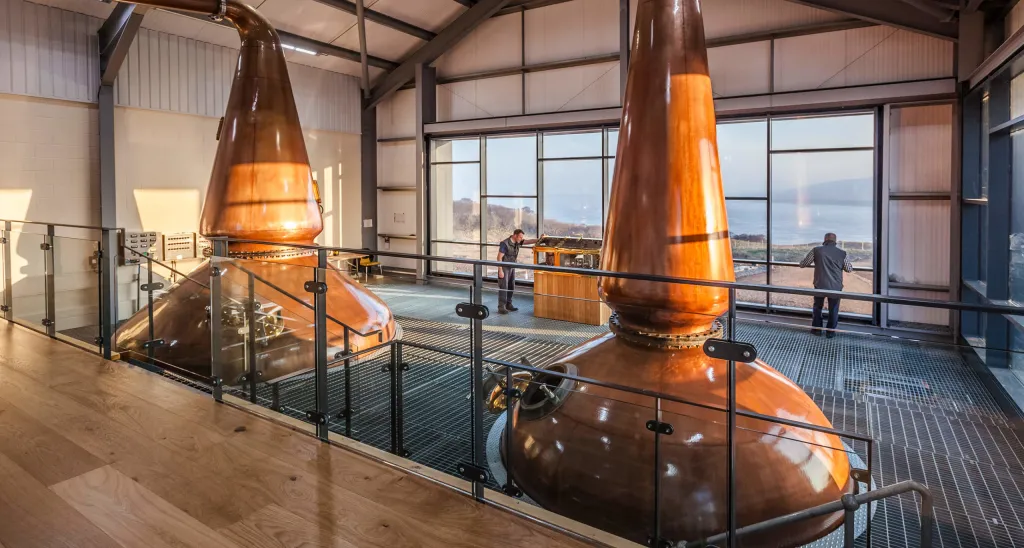
Photo: Ardnahoe Distillery
From an old glory to the newest arrival on the Island, we head north to reach the newly built Ardnahoe Distillery. The distillery saw its first spirit flow only in 2017 and is the first distillery to open in over ten years on the Island (after Kilchoman). Owned by Hunter Laing & Co., it mirrors the increasing trend of independent bottlers setting up their own distillery, and Ardnahoe is a fairly exciting one. The distillery’s building can’t help but please the aesthetic eye: inside, the distillery is a lovely example of new whisky architecture and interior design, with a beautiful shop and a bar and restaurant where you can taste delicious cakes as well as the bottlings of the company, all overlooking the Sound of Islay from a big window with a balcony. A visit here offers an excellent insight into the growing whisky scene and an exciting, varied experience for the palate.
Home of the Mariner: Bunnahabhain
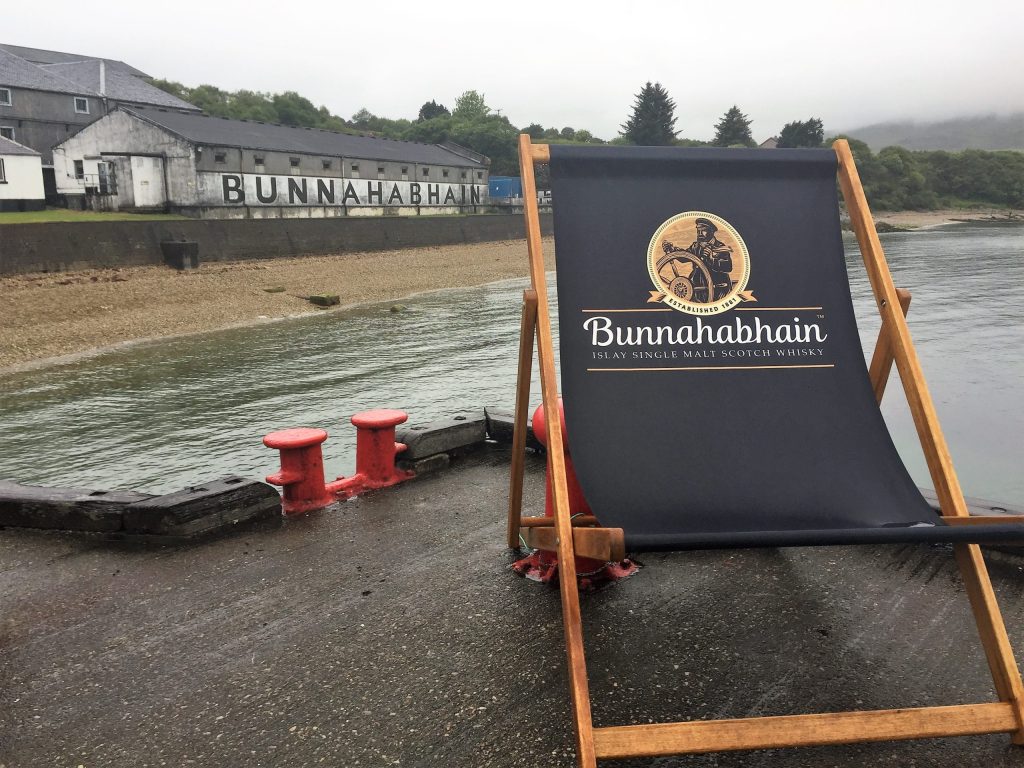
Bunnahabhain Distillery – Photo: Once Upon a Whisky
There are many reasons why Bunnahabhain Distillery stands out from the Islay pack. The first one is directly in their whisky, which is one of the very few without peat smoke at its core: most of their whiskies are unpeated, with some exceptions, leaving space for a nuttier and sweeter character.
Secondly, the look of this distillery is pretty distinctive, as it almost looks like a fishing village, secluded from the rest of the world, with a long pier stretching out into the sound. Islay’s most northerly distillery is a favourite among whisky buffs and has recently unveiled a brand-new visitor centre.
After a visit and a warehouse tasting, head on the path that takes you to Rhuvaal Lighthouse, the most northerly point on Islay, if you fancy a good walk with some breathtaking views. On the way to our next stop, wildlife enthusiasts will be happy to check out the RSPB Nature reserve at Loch Gruinart.
Spirit of Land: Kilchoman
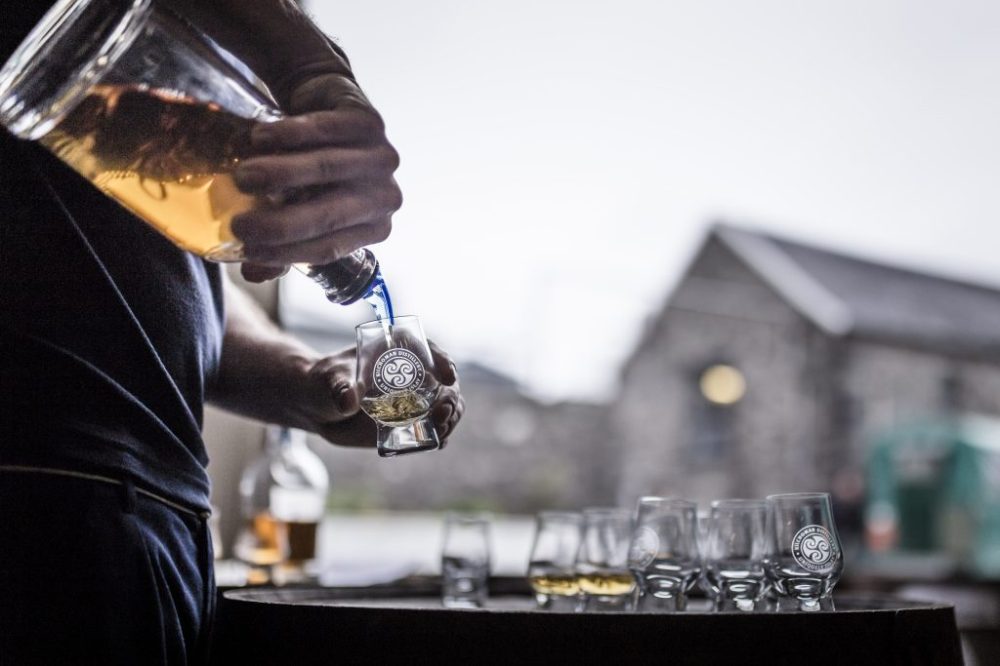
Photo: Kilchoman Distillery
Talking about unusual distilleries, it is now time to head on the winding single-track roads that cut across Islay to get to the second newest distillery on this whisky floating temple: Kilchoman Distillery. Its quirks start with being the only one which is not directly on the sea: Kilchoman is a farm-based distillery, a relatively small business amid crop fields, near the bogs of Loch Gorm and at a walking distance from the stunning Machir Bay (both of which lend their names to distillery bottlings).
What is fascinating about Kilchoman is the connection with the land it is built on – the farm and other surrounding fields are used to produce the barley that goes into making their whisky. Although this doesn’t meet the full demand of the distillery, which, starting in 2005, has attracted an incredible interest against the odds of offering a very young whisky, it also shifts the focus to the possible influences that different barley varieties can have on the whisky flavours.
Fascinating are their comparisons of very young whisky with different yeast strains or barley varieties, unveiling the building blocks of the golden dram. Their visitor centre is also a lovely place to browse for souvenirs or get something to eat at the cafe. Before or after the tour, you can enjoy the stunning views on the coast by reaching the ruins of Kilchoman Church and the military cemetery.
Seafaring explorers: Bruichladdich
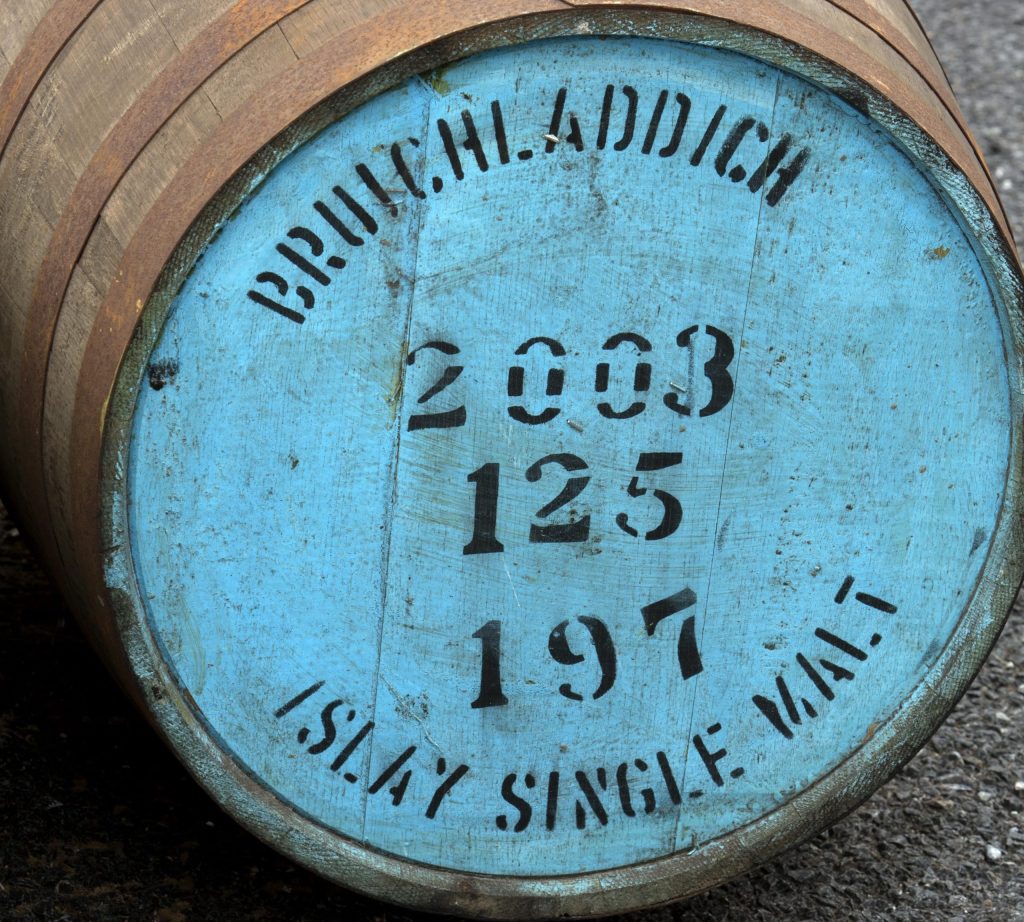
Bruichladdich Distillery – Photo: VisitScotland
If time is by your side and you are in the mood to explore the surroundings, head south through Gearach and Lossit Way, where a country road will take you to the southern tip of the peninsula and the fishing village of Portnahaven by crossing the fields. Either way, we shall meet again at Bruichladdich Distillery – follow the shining ‘Laddie aqu’ – turquoise from afar!
The distillery feels like a welcoming haven on the beach, surrounded by a few other buildings that make up the small settlement of Bruichladdich. Nevertheless, it sees flocks of enthusiasts coming over from all over the world on Feis Fèis. The white buildings, mixed with the Laddiaqua’s details, are a flagship for the brand, which is inspired by the colour of the sea with a particular light shining on the Western Isles.
One thing not to be missed is their warehouse tasting, which is a fantastic delight for the tastebuds, from their Bruichladdich – unpeated expressions, to the charms of the warm, smoky Port Charlotte, to the peat bombs that only Octomore bottlings can deliver.
In the shop, you will see bottlings of all ages, and it is usually an excellent opportunity to get your hands on a hand-fill bottling. Gin enthusiasts will also be happy as this is the distillery where the well-known Botanist gin is produced, with plants sustainably sourced from across the hills and bogs of the Island – and you can have a look at its special still, lovingly named ‘Ugly Betty’.
Hide and seek with the Devil: Bowmore

Photo: VisitScotland
The road that takes you along the coast has stunning views of Lochindaal towards the main town of Bowmore. In the meantime, a visit to the bonny Islay house, in Bridgend, will give you that whisky fix with an excellent selection in their bar and a charming setting. For a sip of local craft ales, you should try the brews from Islay Ales, produced just around the corner.
After this, make your way to Bowmore. Here, Bowmore Distillery lies nestled within this small town, where you can find some interesting restaurants and cafes, such as Peatzeria or The Celtic House. One of the most prominent landmarks is the Round Church, which watches over the village from one end of Main Street. Formally known as Kilarrow Parish Church, the building features a circular design, according to legend, which would supposedly make it impossible for the devil to find any corners where to hide if he were to plan a visit to the surroundings. The distillery, however, offers corners and niches aplenty for a wee devil to hide, the best ones probably hiding in the old warehouse, and the legend of the devil being chased from Bowmore by its inhabitants has also inspired the name of a series of sherry bottlings, called ‘The Devil Casks’.
The distillery is one of the oldest in Scotland and the oldest on the Island, dating back to 1779. It is one of the few distilleries to have its maltings (producing approximately 30% of the barley used) and boasts the oldest maturation warehouse in Scotland, known as No. 1 Vault. The aroma of ancient wood in these old warehouses is unique, and if you can hop on a warehouse tasting, it will surely be a memorable experience. After a tasting, you can almost hop directly on the beach – a stroll on the Bowmore littoral on a calm and sunny day is truly blissful.
Port Ellen and the Kildalton distilleries: Laphroaig, Lagavulin and Ardbeg
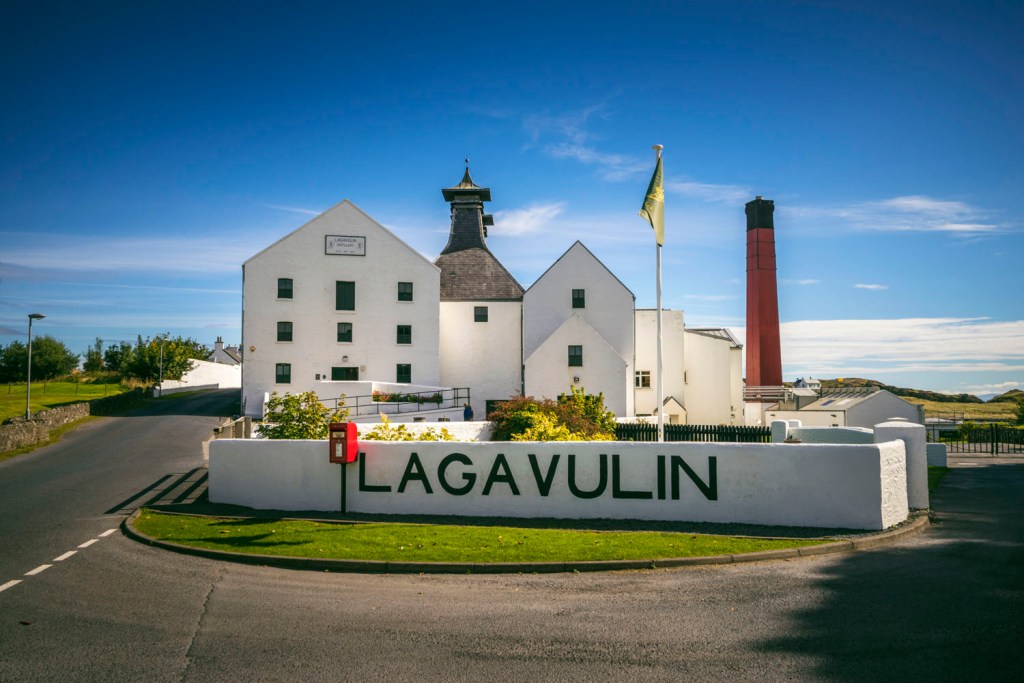
Lagavulin Distillery – Photo: Diageo
From Bowmore to Port Ellen is a straight stretch of the road, connecting the main town to the airport (a great alternative and joy for the easily seasick travellers) and the main port. To the west stands the seemingly interminable Big Strand, the longest beach on Islay, with its 12km of white sand welcoming the waves.
Heading south, we will reach the village of Port Ellen, another tourist hotspot from which visitors arrive and depart and, most importantly, a gateway to one of the most beloved distillery pathways. The village is also home to the old Port Ellen Maltings and the homonymous distillery, which closed in 1987 but is now being revived, promising interesting developments in the future.
Before rushing to the distillery, however, make time to visit the peninsula on the southwest of the Island: the Oa. Thriving with wildlife, the area is an RSPB natural reserve where you can enjoy the beauty and the quiet harmony of the landscape, and where you will find the Singing Sands, a lighthouse and the American Monument, which commemorates the lives lost in a tragic shipwreck in the last years of World War I.
At this point, the whisky thirst will probably be calling, so make your way back to Port Ellen and then take the road east to follow the three distilleries on the way: this is also a good 6-mile walk or a nice cycle if you are in the mood for a bit of exercise (and not having to drive back afterwards!).
The first distillery we meet is with the queen of peat: Laphroaig. This name is probably one of the most well-known among those who love a strong whiff of smoke – or those who have been traumatised by it! The distillery offers a beautiful experience and who knows, you may even want to give it a second chance (there are some more rounded expressions which make it less punchy on the nose, such as the Select or the Triple wood), as the distillery also played a vital part in bringing back the taste of peat in single malts.
A short path cutting through the woods leads to this idyllic distillery, perched on a quiet and beautiful inlet, and if you manage to be around at sunset, the colours of the sky and the sea from the bay are magnificent. As it goes for Bowmore and Kilchoman, Laphroaig is also one of the few to still operate on their floor maltings and a beautifully bright stillhouse.
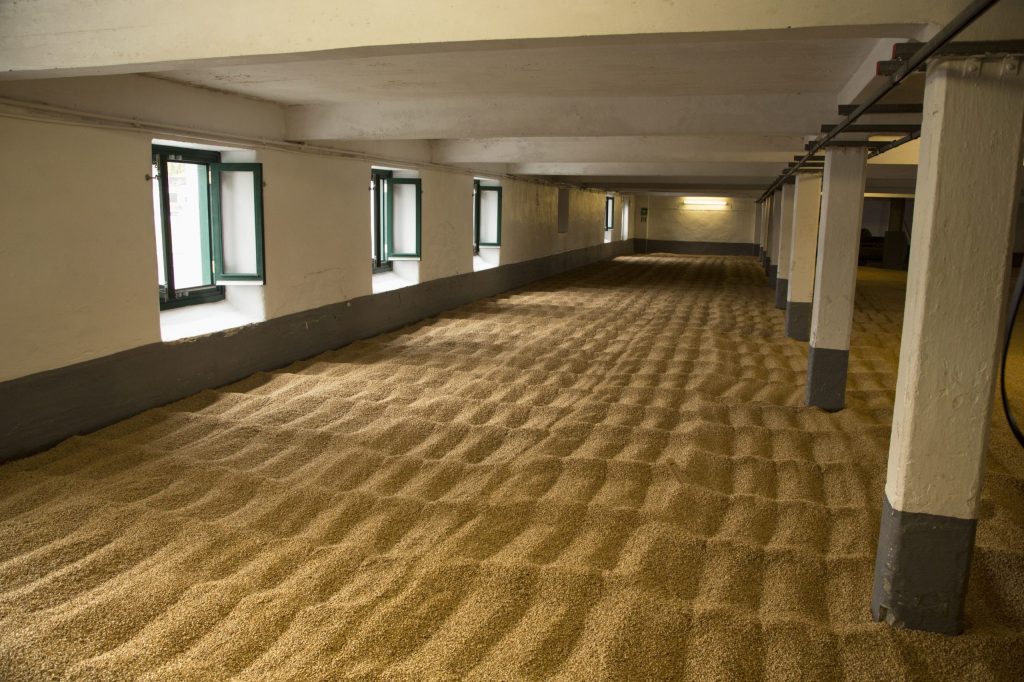
Floors Malting at Laphroaig Distillery – Photo: VisitScotland
Just on the other side of the path, you will see a patch of land dotted with flags – these are the plots reserved for the Friends of Laphroaig (you can get your own by using the code on the bottles). It’s pretty nice to find your plot when you visit if you are a fond lover of this place.
After recovering from the iodine overflow, go back to the path and enjoy the stroll across the woods, which may be interrupted by some wildlife appearances.
After a wee while, the white buildings of Lagavulin Distillery will gently impose themselves on the path, with three metal still-like decorations signalling that this is the right place to stop. Lagavulin sits on a small bay, an elegant building from which boat tours are also available, and sometimes you can spot seals sunbathing just in front of the lovely pier, which provides a splendid view of the distillery from the outside. It is another place of pilgrimage for those seeking a powerful yet elegant smoky dram (fans of the sitcom Parks and Recreation will surely remember Ron Swanson’s heartfelt visit to the distillery). Their warehouse tasting is an experience highly praised by many, and you may have the opportunity to meet the legend, Iain McArthur, the warehouse manager.
The visitor centre has an antique feeling to it – although it was built only in 1998, it has the allure of a cosy cottage living room mixed with an old-style office atmosphere. Sinking into the comfy armchairs while enjoying a dram is a great way to spend a cold afternoon.
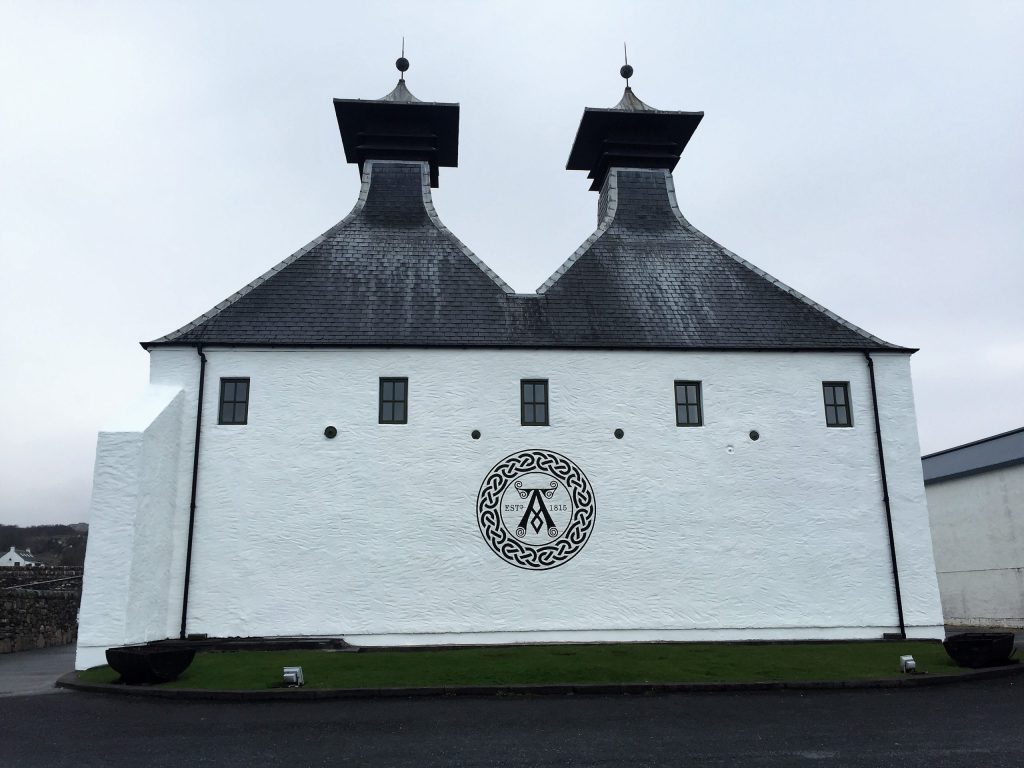
Ardbeg Distillery – Photo: Once Upon a Whisky
When you are ready, make way for the last stretch of our journey, finally reaching Ardbeg Distillery. A copper still will welcome you as you enter its grounds, where the Celtic-inspired logo marks every building and even the floor. On your left, the Old Kiln Cafe offers tasty dishes, and a wide range of tastings from the distillery are on the menu. A small room holds pieces of the collection from the past years, and the vivid green of the bottles illuminated by the background light is quite impressive, as the stories behind some of their bottlings and experiments (They have even sent whisky into space!).
After having had a few tasters – and maybe giving your judgement on the battle for the peatiest whisky, which sees a head-to-head with Bruichladdich-made Octomore, take your dram and go to the seafront. Breath in the breeze of the Atlantic, feel the sound of the waves crashing around you, lose your gaze on the horizon, and raise a toast to the journey behind you.
Thank you for coming with us, and Slàinte mhath!
Events and Festivals
Fèis Fèis- The Islay Whisky Festival
One of the most beloved whisky events, almost a pilgrimage for peat lovers (and not only) if you like. The Islay whisky festival turns the whole Island on for the last week of May/start of June with music, good vibes and, most importantly, a constant downpour of whisky. With each distillery organising an open day, people from all over the world gather for the wonders of the local distilleries. If you are around Scotland around that time, make sure this is well-marked on your calendar.
Islay Book Festival and Islay Jazz Festival
Whisky and astounding nature are not the only things Islay has to offer – here you’ll find a thriving cultural scene, with a fantastic book festival bringing authors to the Outer Hebrides and celebrating the local Gaelic Heritage. If music is more your cup of tea, you’ll have a wonderful time at the Jazz festival, which is organised in November. Great music and rhythm to keep your body and soul warm during the cooler months!
Jura Music Festival
If you love traditional music, this event is an excellent celebration of Scottish folk, featuring ceilidhs and traditional instruments, and is a highlight for locals and visitors alike. Performances, workshops and sessions go on throughout the weekend at the end of September – and why not cheer with a dram?
Whisky journey top tip #6: match the local flavours
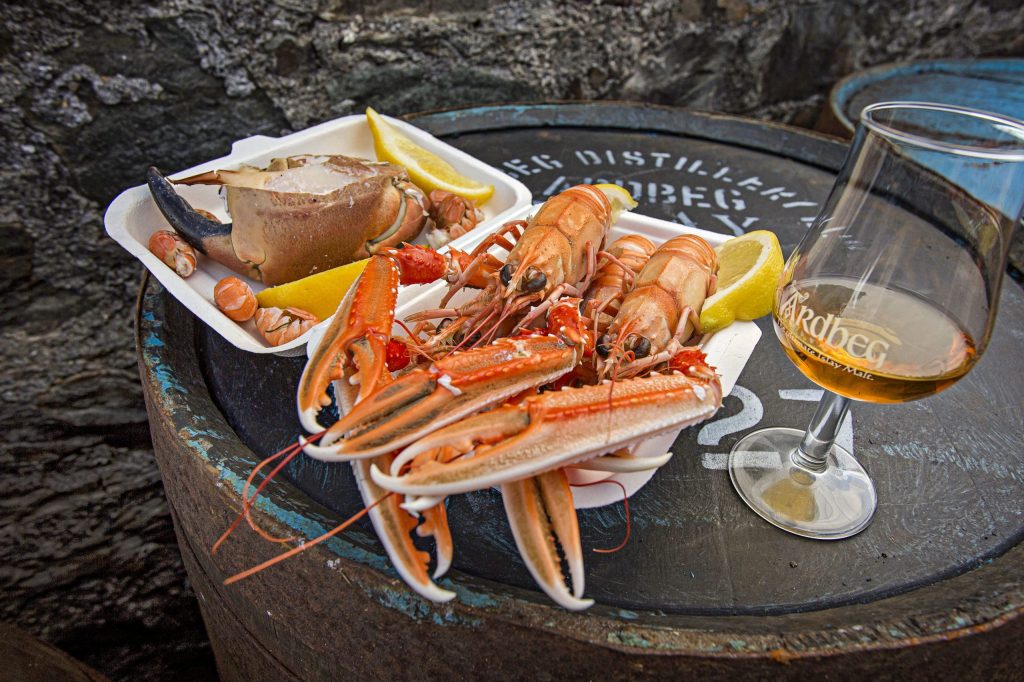
Ardbeg Day Whisky Festival – Photo: Visit Scotland
I firmly believe that one of the greatest joys of travelling is discovering a place and a culture through the local flavours. Locally sourced products can reveal a great deal about the land where they are grown or produced. This is particularly true for whisky, but a delightful way to experience a whisky trip is to pair the drams with some local treats – from seafood to cheese, chocolate, or even honey, you can play with the tasting notes and make it an even more memorable journey for your palate.
Whisky journey top tip (extra): learn a few Gaelic rudiments
If you are new to Scotland or not too experienced, you’ll find that the whisky industry’s vocabulary is very imbued in Scottish Gaelic. A bit for tradition and a bit because the language evokes a certain history that works well for marketing. You’ll often come across names that range widely in pronunciation difficulty – I have seen people frown while trying to pronounce Auchentoshan or Bunnahabhain. Therefore, a wee revision on how things are pronounced in Gaelic and learning a few recurring words (glen= valley; aber=confluence of waters and so on…) will make your life easier and some locals will appreciate the effort!
Continue reading…
Whisky Route 1: The North Coast 500
Whisky Route 2: The Malt Whisky Trail: Speyside [World’s Whisky Capital]
Whisky Route 3: Whisky Hopping Across the Highlands
